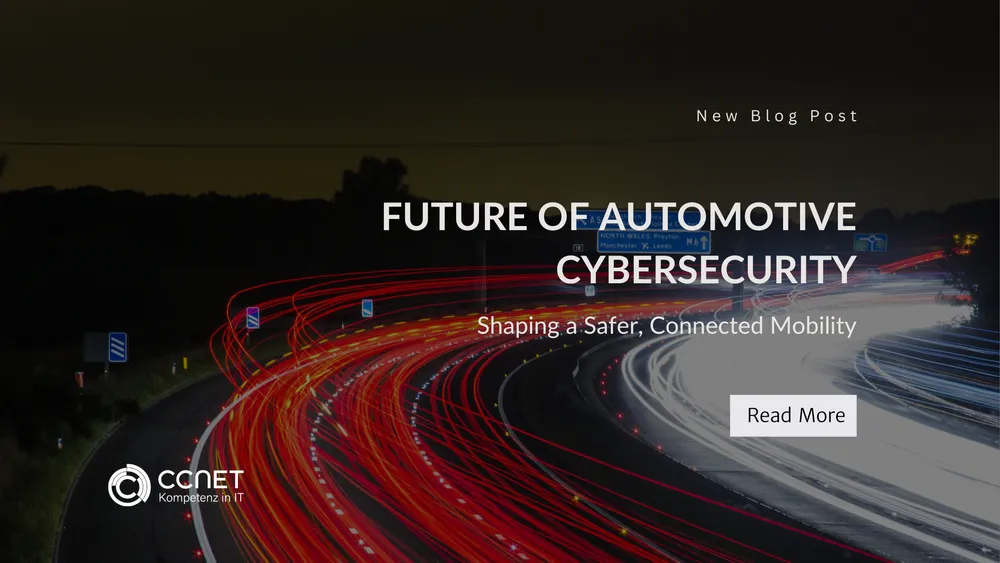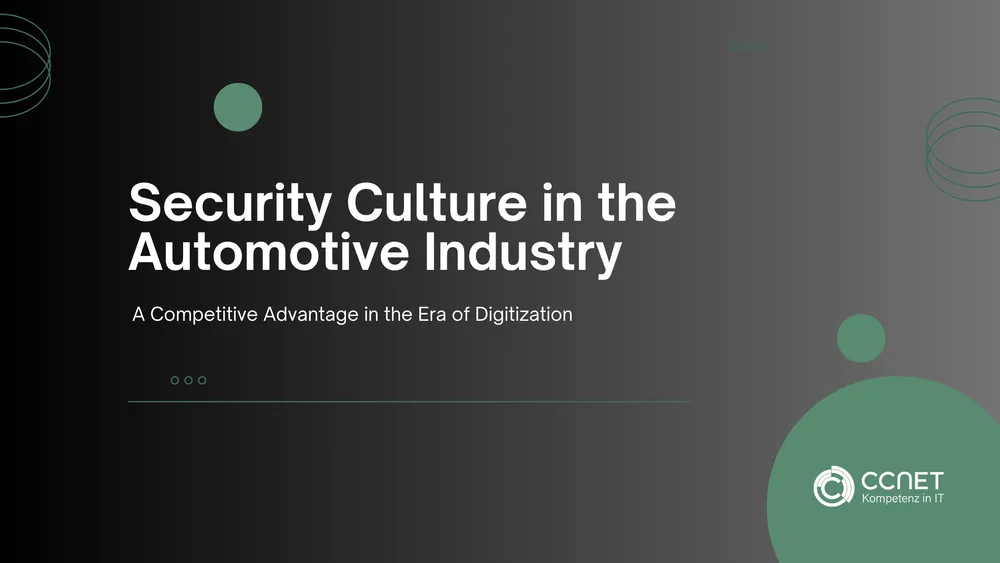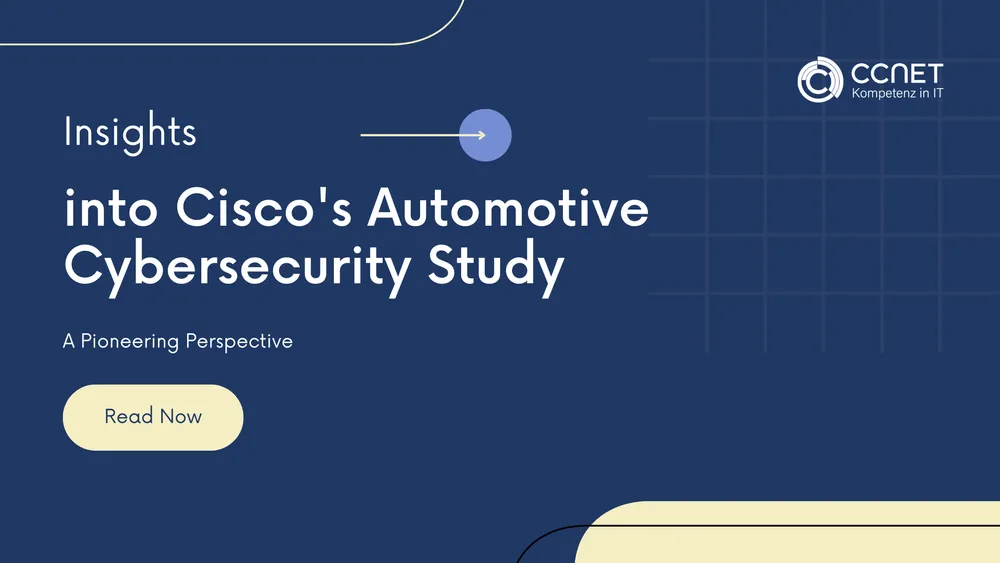
CCNet
Aug 14, 2024 • 3 min read

The 4C of Automotive Cybersecurity: A New Foundation for the Automotive Industry
With digitization taking the wheel, we are faced with the challenge of keeping our vehicles safe not only on the road but also in cyberspace. Cisco's recent Automotive Cybersecurity Study sheds light on this challenge and presents a groundbreaking strategy, the 4C: Competencies, Collaborations, Culture & Organization, and Cyberstrategy. These four pillars are intended to help the automotive industry arm itself against the growing cyber threats. In this blog post, we delve deeper into the 4C model and explore how it can revolutionize cybersecurity in the automotive sector.
Competencies: The Foundation of Cybersecurity
In the automotive industry, it's crucial for companies to build a solid foundation of cybersecurity competencies. This starts with training employees in cybersecurity best practices and extends to the development of advanced security technologies. Cisco's Automotive Cybersecurity Study underscores the importance of a deep understanding of the cyber threat landscape and the ability to proactively respond to security vulnerabilities. Companies must invest in the education and upskilling of their teams to ensure that their competencies are always up to date with the latest technology.
Collaborations: Stronger Together
The automotive industry is an ecosystem where manufacturers, suppliers, dealers, and many other actors collaborate. In the realm of cybersecurity, this collaboration is even more critical. Through collaborations, companies can share knowledge, develop common security standards, and more effectively combat cyber threats. The study emphasizes the importance of these actors looking beyond their own corporate boundaries and keeping the bigger picture in mind. Only by pooling resources and expertise can we create a cybersecurity architecture robust enough to meet the complex challenges of our time.
Culture & Organization: A Security-Conscious Environment
A strong security culture within a company is crucial for effectively combating cyber threats. This involves embedding cybersecurity as a priority at all levels of the organization, from top management to new hires. The 4C of Automotive Cybersecurity suggests that companies should create an environment where security concerns are openly communicated and can be addressed quickly. Transparent communication about potential risks and the implementation of clear guidelines and procedures for dealing with cyber threats are essential here.
Cyberstrategy: The Compass in the Digital World
A comprehensive cyberstrategy is the backbone of any successful cybersecurity initiative. It defines how a company protects itself against cyber threats, responds to incidents, and learns from them. An effective strategy must encompass both preventive measures and response plans while considering the specific needs and risks of the company. Cisco's Automotive Cybersecurity Study highlights that an adaptive cyberstrategy, evolving with the constantly changing cyber threat landscape, is crucial for the long-term protection of companies and consumers.
Conclusion: The Future of Automotive Cybersecurity
The 4C of Automotive Cybersecurity provides a comprehensive framework for strengthening cybersecurity in the automotive industry. As we continue to move towards an increasingly connected and automated future, it's crucial that cybersecurity is considered an integral part of automotive design and operations. By applying the 4C model, companies can not only protect their own vehicles and customers but also make a valuable contribution to the security of the entire industry. Ultimately, cybersecurity in the automotive industry is a shared responsibility that we all bear. By working together and consistently investing in our competencies, collaborations, culture & organization, and cyberstrategies, we can pave the way for a secure, connected future of mobility.
FAQ about the automotive industry
What do the 4Cs mean in automotive cybersecurity?
The 4Cs stand for competencies, cooperation, culture & organization, and cyber strategy—four pillars for a holistic cybersecurity strategy in the automotive industry.
Why are cybersecurity competencies so important for the automotive industry?
Because only trained employees and up-to-date technical skills enable companies to respond effectively to new threats.
What role do collaborations play in automotive cybersecurity?
Collaborations enable the exchange of knowledge, the development of common standards, and stronger defenses against complex cyber threats.
How can a culture of security be established within a company?
Through transparent communication, training, and modeling security-conscious behavior at all levels – from management to production.
What characterizes a good cyber strategy in the automotive industry?
It is holistic, combines preventive measures with response plans, and continuously adapts to new threat situations.
Why is the 4C model relevant for the future of automotive security?
Because it helps to firmly anchor cybersecurity in the design, organization, and operation of connected vehicles – as part of a sustainable mobility strategy.
What are the long-term benefits of applying the 4C model?
It not only strengthens the protection of vehicles and data, but also customer confidence and the resilience of the entire industry.


